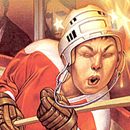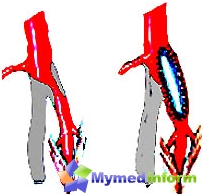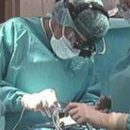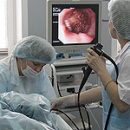Intestinal obstruction develops as a result of the disorder of the intestinal food passage. The main symptoms of intestinal obstruction are grabs-like pain in the abdomen, nausea and vomiting, latency of the chair and gases.
Content
Concept of intestinal obstruction
Acute intestinal obstruction is characterized by a violation of the passage of the intestinal contents due to the violation of its lumen, compression or disorders of the intestinal function. According to the mechanism of the occurrence, mechanical and dynamic (spastic and paralytic) intestinal obstruction.
Mechanical obstruction can be the strange (intestinal assembly, the intestinal turn, squeezing the intestines and the sections of the mesentery from outside with a local circulatory impairment, various types of infringement) and obtultational (blockage of the intestine of the ingredients, food masses, bile and fertile stones, the grueling of the incense with inflammatory infiltrate or tumor from outside). Intestinal invagination at the same time is common and stagnation obstruction. Thrombosis and embolism of mesenterial vessels (blood vessels of the spray) also cause intestinal obstruction.
Causes of the development of intestinal obstruction
Spastic obstruction rarely occurs. In most cases, the cause of a resistant spasm of one or more intestinal sections, which leads to the development of obstruction, may be ascariasis (local exposure to the toxic substance allocated ascaride), lead poisoning, irritation of the intestinal wall of a foreign body, coarse food, sometimes a focus reaction, further spasm May be changed with paresium and paralysis of the whole intestine.
For the spastic form of obstruction, the stormy development of symptoms is characterized as long as the turbulent motility of the intestine, exhausted, is not replaced by the oppression of motility, the coming faster than the brighter the spastic attack is expressed.
Paralytic obstruction always happens the secondary, due to the effects on intestinal innervation of toxins or reflex influences. Most often, its development is caused by peritonitis, abdominal bruises, hemorrhage in mesentery and retroperitoneal space. Sometimes paralytic obstruction causes myocardial infarction, as well as drugs and other drugs, inhibiting intestinal peristalsis.
The main manifestations of intestinal obstruction
 The main symptom of intestinal obstruction is only an increasing bloating. The phenomena of secondary functional obstruction are usually developing for several days, although there are cases when they are progressing rapidly and on the outcome of the first day is formed by paralytic intestinal obstruction.
The main symptom of intestinal obstruction is only an increasing bloating. The phenomena of secondary functional obstruction are usually developing for several days, although there are cases when they are progressing rapidly and on the outcome of the first day is formed by paralytic intestinal obstruction.
So, the signs of acute intestinal mechanical obstruction are grapple-shaped pain in the abdomen, nausea and vomiting, the delay in the deposition of gases and feces.
Abdominal pain - the most frequent symptom of intestinal obstruction. In the strange intestinal obstruction, it, as a rule, arises sharply, is extremely intense and usually grasp. With an extensive blurry of the small intestine and the nodes formation can quickly develop pain shock. For obtuctive obstruction, the slow increase in pain, which is almost never intensive. In case of intestinal obstruction, pain is initially localized in the area of the affected hearth, later it becomes spilled. The cessation of pain occurs with the complete death of the intestine, which is manifested by a severe common state.
Vomiting (first food, then bile, and at later stages - intestinal content with a calm odor) is a constant symptom of high intestinal obstruction. The lower the intestine there is an obstacle, the vomiting is less intense. With low thick-bone obstruction of vomiting may not be absent.
Stool and gases delay - one of the most important symptoms of intestinal obstruction. Attempts to patients (often experiencing painful urges) empty the intestines turn out to be unsuccessful. However, it is necessary to take into account that with high obstruction after the cleansing enema from the following intestinal departments, significant amounts of feces can be isolated, but it does not occur or it does not occur.
For course, intestinal obstruction can be acute (complete) and chronic (partial). Partial intestinal obstruction is most often due to spikes or tumor. The symptoms of the disease at the same time are less bright and carry either a protracted character or occur in the form of repeated sharp attacks, sacrificing independently or under the influence of conservative medical events. But at one such exacerbation, a picture of acute obstruction can develop. Partial intestinal obstruction often cause tumors of the colon, so all such patients need a thorough examination of the colon.









